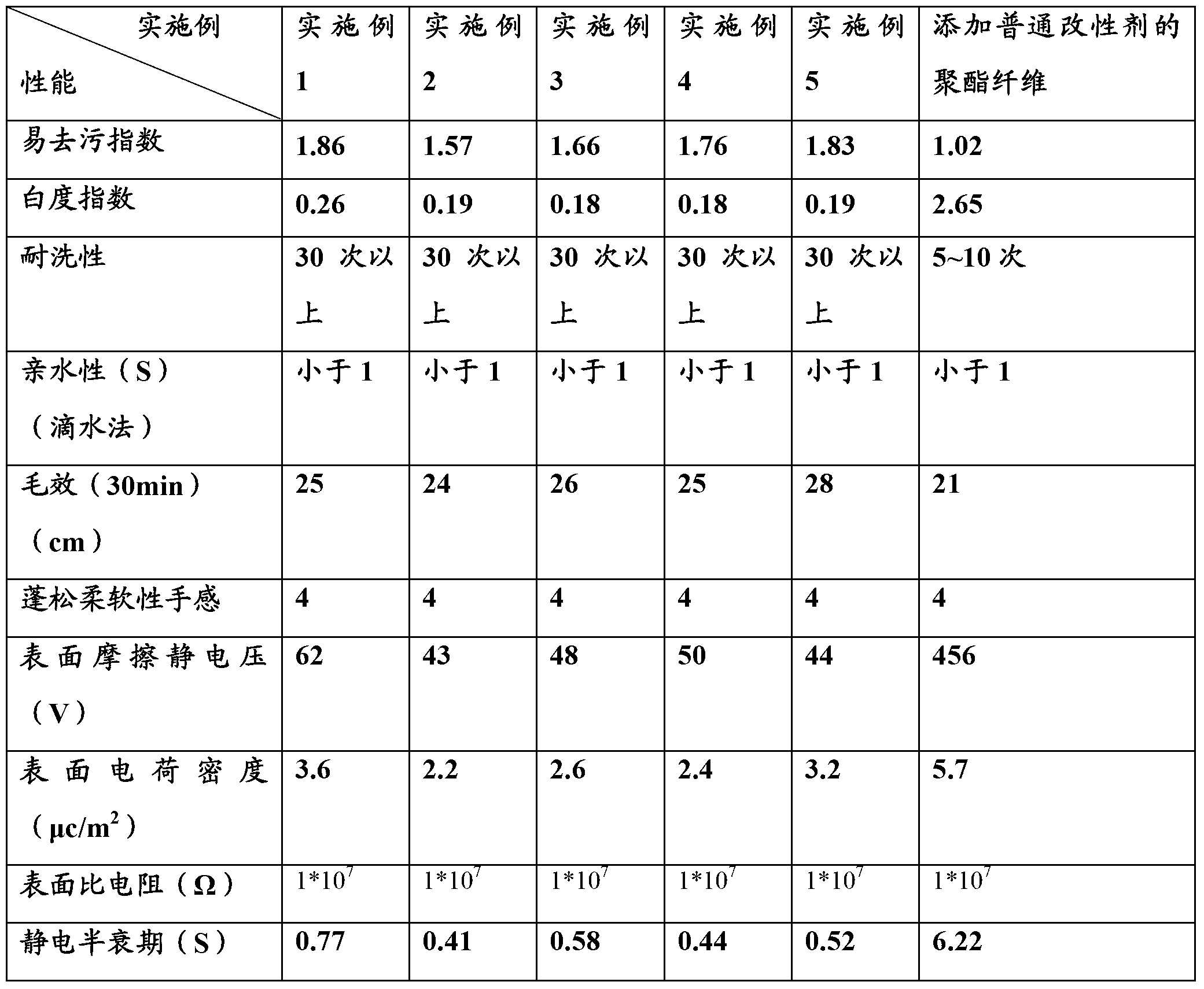Decontamination finishing agent used for polyester fiber, and preparation method thereof
A polyester fiber and finishing agent technology, applied in fiber processing, fiber types, textiles and papermaking, etc., can solve the problems of unwashable textiles, poor decontamination performance of polyester fibers, and difficulty in removing dirt, etc. The effect of easy decontamination, improved fluffy and soft feeling, and excellent washability
- Summary
- Abstract
- Description
- Claims
- Application Information
AI Technical Summary
Problems solved by technology
Method used
Image
Examples
Embodiment 1
[0015] 1) Weigh 800 grams of polyethylene glycol, 150 grams of ethylene glycol, 180 grams of dimethyl terephthalate, 800 grams of polyamide, and 10 grams of magnesium acetate;
[0016] 2) Put the above materials into the reaction kettle, raise the temperature to 140°C and keep it for 190 minutes, continue to raise the temperature to 220°C and keep it for 70 minutes, then carry out the polymerization reaction at a vacuum degree of -0.08MP and a temperature of 230°C to generate a number average molecular weight of 5000~ 6000 block copolymer of polyester polyether polyamide, after cooling down to 190°C, discharge;
[0017] 3) Mix the block copolymer of polyester polyether polyamide, glycerin and water into a solution according to the mass ratio of 1:3:96.
Embodiment 2
[0019] l) Weigh 900 grams of polyethylene glycol, 140 grams of ethylene glycol, 170 grams of dimethyl terephthalate, 700 grams of polyamide, and 7 grams of zinc acetate;
[0020] 2) Put the above materials into the reactor, raise the temperature to 150°C and keep it for 160 minutes, continue to raise the temperature to 210°C and keep it for 60 minutes, then carry out the polymerization reaction at a vacuum degree of -0.08MP and a temperature of 240°C to generate a number average molecular weight of 8000~ 9000 polyester polyether polyamide block copolymer, after cooling down to 200 ℃, discharge;
[0021] 3) Mix the block copolymer of polyester polyether polyamide, ethylene glycol, and water into a solution in a mass ratio of 2:3:95.
Embodiment 3
[0023] l) Weigh 700 grams of polyethylene glycol, 160 grams of ethylene glycol, 190 grams of dimethyl terephthalate, 900 grams of polyamide, and 8 grams of calcium acetate;
[0024] 2) Put the above materials into the reaction kettle, raise the temperature to 180°C and keep it for 180 minutes, continue to raise the temperature to 210°C and keep it for 60 minutes, then carry out the polymerization reaction at a vacuum degree of -0.09MP and a temperature of 280°C to generate a number average molecular weight of 14000~ 15000 block copolymer of polyester polyether polyamide, after cooling down to 200 ℃, discharge;
[0025] 3) Mix the block copolymer of polyester polyether polyamide, fluorine-containing resin, and water into a solution according to the mass ratio of 3:3:94.
PUM
 Login to View More
Login to View More Abstract
Description
Claims
Application Information
 Login to View More
Login to View More - R&D
- Intellectual Property
- Life Sciences
- Materials
- Tech Scout
- Unparalleled Data Quality
- Higher Quality Content
- 60% Fewer Hallucinations
Browse by: Latest US Patents, China's latest patents, Technical Efficacy Thesaurus, Application Domain, Technology Topic, Popular Technical Reports.
© 2025 PatSnap. All rights reserved.Legal|Privacy policy|Modern Slavery Act Transparency Statement|Sitemap|About US| Contact US: help@patsnap.com

